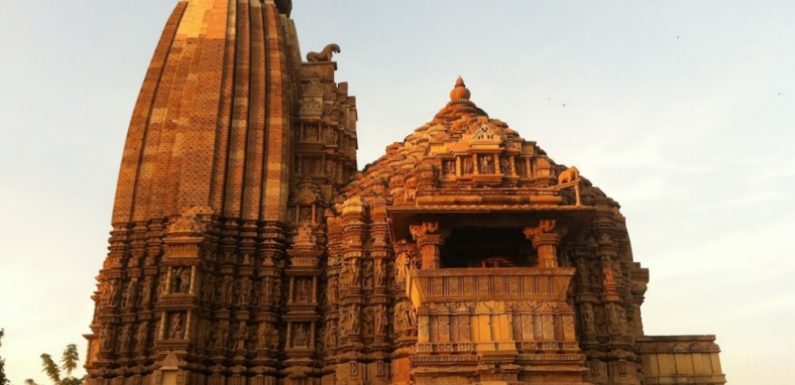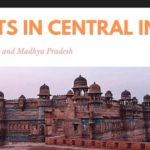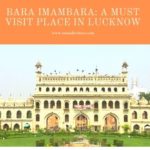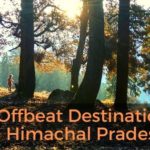
As always, I wished I had another day to spare for Khajuraho while returning to the railway station. I could have walked around the temples with my monocular, observing the details of the finely crafted sculptures adorning the walls of every temple. Or maybe I would have spent the day at Beeja Mandal mound, observing the restoration work by Archaeological Survey of India. Or I would have begged & argued with the guard at Jain temple complex and walked down the stairs of the baoli and simply stare at the green water of the old well. I could also hire a scooter and ride to the distant wildlife sanctuaries, to select which one is the tougher question.
But corporate slaves can only wish and sigh, then continue on the return journey from yet another amazing vacation from this world heritage site.
An Everyday Town
Khajuraho is in the middle of nowhere. The major cities of India, which we come across in newspapers & television are distant place for this small town. Here restaurants have names written in Japanese (or is it Chinese) and many other languages which I couldn’t recognize. Hawkers and rickshaw drivers see you as a big fat purse with limbs. Though most of the folks I interacted with were courteous & amiable, they lacked that warmth which would make one wanting to connect with them again.
First Impression
We reached Khajuraho right in time for a brunch. The only problem was we couldn’t find any restaurant near the station. Unlike most railway stations of India, Khajuraho’s railway station is around 10 km away from the town. You can both hire an auto-rickshaw from as low as Rs. 100 or jump into one of those shared auto-rickshaw and pay Rs. 20 each. On the way, we saw the old and the new (swanky) airport of Khajuraho, deserted, without a single soul was around.
How to get around Khajuraho?
For those of you, who have travelled though rural India, the landscape of this small town (if I may call it a town) has hardly anything more to offer. But as you reach the outskirts of the town, you will see familiar boards of accommodation and restaurant advertisements. If you used the share auto-rickshaw like we did, be sure to ask about the dropping point. They might take you to the bus stand which is a mile away from the Western group of temples, where lies the action. We ended up paying extra money to reach the center of town.
Upon arrival, we were approached by guides, from kids to adults, offering services from accommodation to sight-seeing. Guides here charge Rs.1035 for showing you the temples. We chose not to take their help and I believe we made the right decision.
There are enough options for accommodation and dining in Khajuraho. Like most Indian places in world tourism map, it’s easier to find decent American/European styled (but Indian flavoured) dishes with menu cards in a variety of languages. After a quick brunch on one such rooftop restaurant, we hired a scooter for a small amount (INR 500 + petrol @ INR 65 per litre) and started our exploration.
Where not to stay
Like in Udaipur,I managed to be on the wrong side of Indian hospitality when it comes to accommodation. Upon recommendation from a dear friend and a traveller himself, we had booked rooms in one Yogi Ashram. But the manager politely refused us claiming that guests over-stayed at his place and he has no room to spare for us. I am still happy about it, especially after reading about his ‘free’ yoga & massage services he offers to his foreign guests – happy that I was spared from such flattering experience! Instead of finding an accommodation, we head to the nearby Raneh falls, riding through small villages, on a well tarred road through rice & mustard fields.
Blessed with rich Flora and Fauna
Khajuraho is blessed with quite a number of wildlife sanctuaries nearby (within few hours’ drive). Raneh falls and the alligator sanctuary in its vicinity is the nearest, quite a feast for your travel buds, even though we visited it during the off-season.
The Ken river had hardly any water, my shower had more water than the fall. It’s a marvelous display of the sheer force & willpower of a river. Cutting a deep gorge through the granite and various other stones, this river has created a visual treat of natures might. I hope to visit it once again during my favourite season, the monsoons, to see the swollen river & the waterfalls.
Lack of Infrastructure
Honestly, I missed a guide’s service or a credible article on internet to explain me about the geographical importance of this site like the various stones (from black to pink). Someday, I hope someone reading this will be able to throw light on the same. We decided against visiting alligators and headed back to the town on a 20 odd km ride. I would recommend you to hire bikes instead of rickshaws to explore Khajuraho.
Back in Khajuraho, finding a hotel was easier than we thought. Though mobile network have more dead-spots in Khajuraho than dust-bins, we managed to find a decent place at a decent price.
Temple Town
After a quick lunch, we started off again to explore the Eastern and Southern group of temples. Legend speaks of more than eighty temples in Khajuraho, but only twenty odd remain. Archaeological Survey of India has done a wonderful job in preserving few and identifying more mounds. We decided to start from the farthest and kick started the scooter started towards the farthest of all, the Chaturbhuja temple. It would be unfair of me if I write about the temples in this travel note, they demand more words and pictures.
Till I find the right words & pictures which can remotely justify this architectural beauty, I bid you farewell.











I will so love to spend a few days there, in khajuraho.
And i would strongly recommend that, maybe in monsoons or early winters